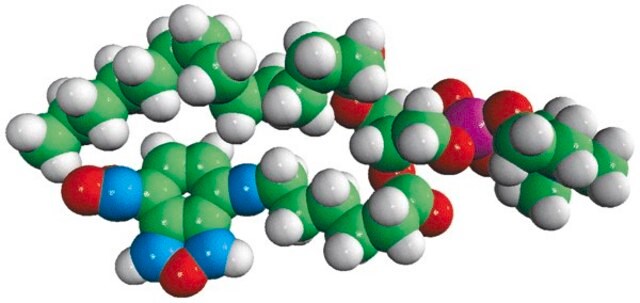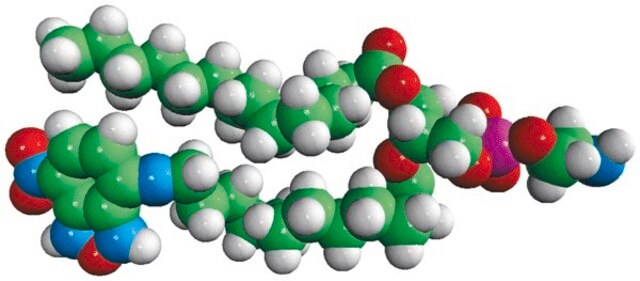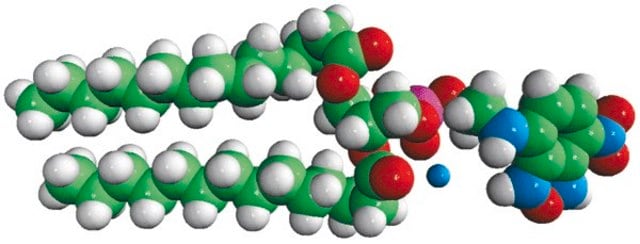810123P
Avanti
14:0-12:0 NBD PC
Avanti Research™ - A Croda Brand 810123P, powder
Synonim(y):
1-Myristoyl-2-[12-[(7-nitro-2-1,3-benzoxadiazol-4-yl)amino]dodecanoyl]-sn-Glycero-3-Phosphocholine
About This Item
Polecane produkty
Próba
>99% (TLC)
Postać
powder
opakowanie
pkg of 1 × 1 mg (810123P-1mg)
pkg of 5 × 2 mg (810123P-10mg)
producent / nazwa handlowa
Avanti Research™ - A Croda Brand 810123P
typ lipidu
fluorescent lipids
phospholipids
Warunki transportu
dry ice
temp. przechowywania
−20°C
Opis ogólny
Zastosowanie
Działania biochem./fizjol.
Opakowanie
Informacje prawne
Kod klasy składowania
11 - Combustible Solids
Certyfikaty analizy (CoA)
Poszukaj Certyfikaty analizy (CoA), wpisując numer partii/serii produktów. Numery serii i partii można znaleźć na etykiecie produktu po słowach „seria” lub „partia”.
Masz już ten produkt?
Dokumenty związane z niedawno zakupionymi produktami zostały zamieszczone w Bibliotece dokumentów.
Nasz zespół naukowców ma doświadczenie we wszystkich obszarach badań, w tym w naukach przyrodniczych, materiałoznawstwie, syntezie chemicznej, chromatografii, analityce i wielu innych dziedzinach.
Skontaktuj się z zespołem ds. pomocy technicznej








